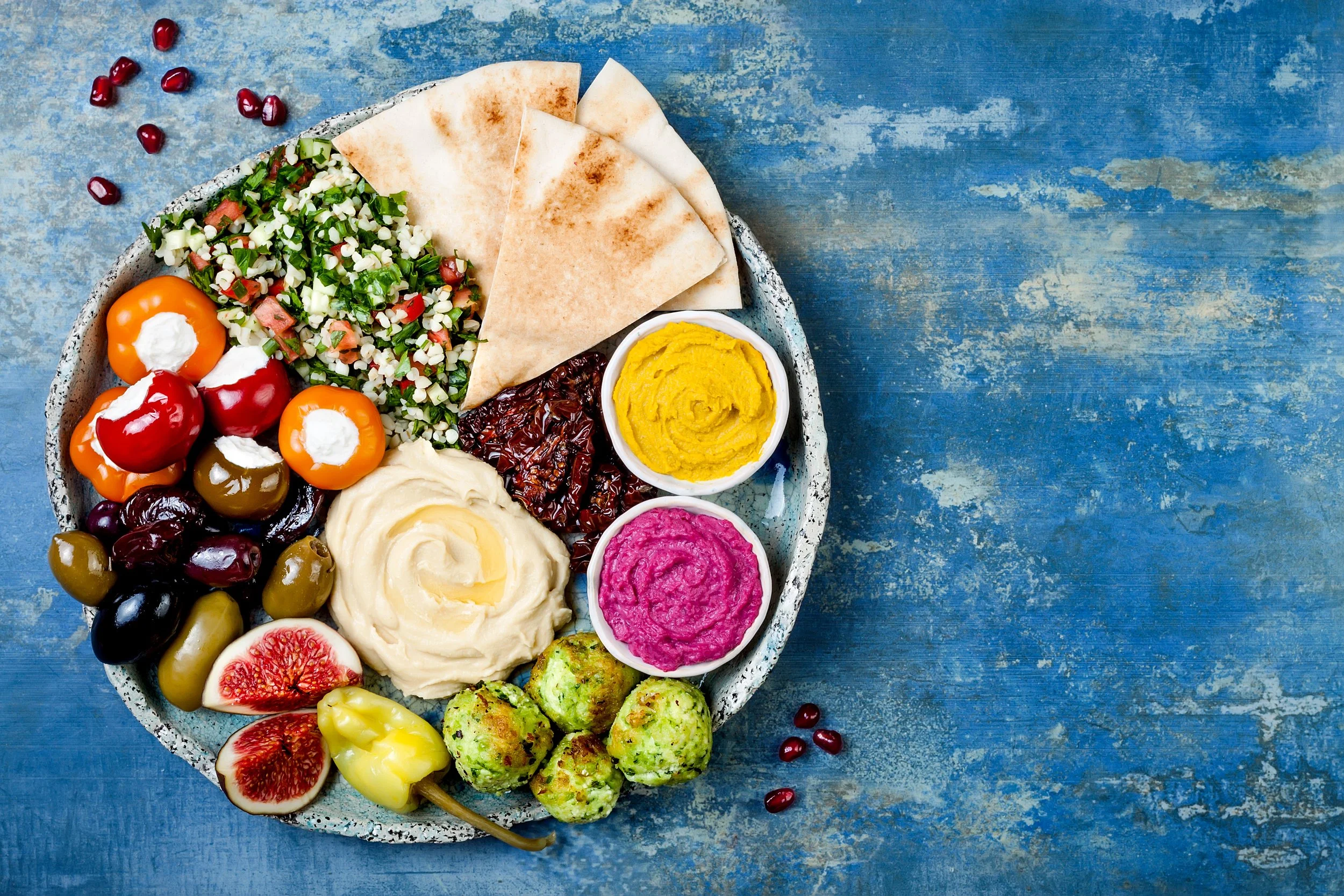Getting Started with The Mediterranean Diet
The Mediterranean Diet:
What to Eat, What to Avoid, Where to Start
The Mediterranean diet is actually much simpler than you might think. First, it may take you rethinking how you organize your plate. You may be someone who decides on a protein prior to any other food group on your plate. When keeping with the Mediterranean diet, you should try choosing your vegetable or grain first. Then, consider adding a protein option. You might find that you need more small plates of salad, grain, and a side of lean protein for your meal.
It is important to think “more veggies, less meat” and consider moderate portion sizes to keep your health in check.
What To Eat
Vegetables
Fruits
Grains (focus on WHOLE grains)
Beans
Legumes (chickpeas, lentils, etc.)
Nuts
Olive Oil
Herbs, spices
Fish, seafood
Poultry
Eggs, Yogurt, Cheese (in moderation)
Optional: Wine (in moderation)
The incredible micronutrients and high fiber content found in different vegetables, fruit, legumes, and beans is one of the main reasons why the Mediterranean diet is so healthy. Fiber helps promote better gut health and makes you feel full for longer. It also helps to control blood sugar spikes, decreasing your risk of diabetes. Fiber is also important as it helps to increase your good cholesterol while lowering your bad cholesterol.
Healthy whole grains include quinoa, brown rice, wild rice, oatmeal, popcorn, farro, barley, bulgur, and whole wheat flour, pasta, bread, crackers. For breakfast cereals, choose whole-grain options with low sugar content and higher fiber.
Fish and Seafood provide a rich source of healthy omega-3 fatty acids, while staying low in calories and saturated fat. Omega-3 fatty acids help increase healthy cholesterol levels, which will lower your risk of developing cardiovascular disease, diabetes, stroke, and certain cancers.
Olive oil provides more omega-3 fatty acids to help support cardiovascular health. You don’t have to reach for plain olive oil each time you cook. There are many infused olive oils with enhanced flavors like roasted garlic, basil, or a tuscan blend that are fun to add to salads and pasta dishes.
What to Avoid
Red Meat
Processed Meat
Sweets, processed baked goods
We want to limit the amount of red meat, processed meat that we eat on a daily, even weekly, basis. These products tend toward higher levels of saturated fat, which contributes to higher risk for cardiovascular disease and diabetes. They also contain higher levels of salt, contributing to an increased risk of hypertension.
One tip is to consider using meat as the flavoring instead of the main part of the meal. For example, I like to use chopped prosciutto in soups for salty, savory flavor in addition to herbs and spices.
Where to Start:
Rethink how you organize your plate: “more veggies, less meat”
Reach for Beans and Whole Grains on a daily basis
Choose Fish, seafood, and poultry over red meat or other processed meats
Add olive oil and avoid butter
Think “moderation” in terms of portion size
For occasional dessert, consider in-season fruit or a small glass of wine in moderation


